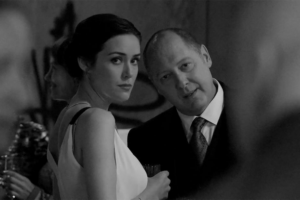
For years, The Blacklist has captivated audiences with its thrilling crime stories, complex characters, and intense drama. At the heart of the show is Raymond “Red” Reddington, played by James Spader, a brilliant criminal mastermind who helps the FBI catch other dangerous criminals from his “blacklist.” This has drawn many comparisons to other iconic works in the crime thriller genre, most notably Silence of the Lambs. However, the producers of The Blacklist are clear in their stance: this show isn’t Silence of the Lambs. But what exactly makes The Blacklist distinct, and why do they feel the need to separate themselves from this famous film?
Let’s dive into the details behind these claims, explore the key differences, and highlight why The Blacklist offers something uniquely gripping.
The Premise of The Blacklist vs. Silence of the Lambs
At first glance, The Blacklist and Silence of the Lambs do share certain surface-level similarities. Both revolve around an enigmatic criminal working alongside law enforcement to apprehend other criminals. But that’s where the similarities end.
The Blacklist: A Criminal with a Mission
The central plot of The Blacklist follows Raymond “Red” Reddington, who voluntarily surrenders to the FBI after evading capture for years. He offers to assist the FBI in capturing high-profile criminals on his personal “blacklist” in exchange for immunity. However, Red’s motives aren’t purely altruistic; there’s always a bigger plan at play, and his complex relationship with FBI agent Elizabeth Keen adds layers to the story. Red’s character is not just a killer but a highly intelligent strategist with a long-term game, often playing both sides in the chessboard of crime and law enforcement.

Silence of the Lambs: A Unique Dynamic
In Silence of the Lambs, we have Hannibal Lecter, a brilliant psychiatrist and cannibalistic serial killer who’s imprisoned in a psychiatric facility. The relationship in Silence of the Lambs between Lecter and Clarice Starling, the FBI trainee seeking his help in catching another killer, is built on psychological manipulation and intense mind games. While The Blacklist involves criminals with sophisticated minds, the focus in Silence of the Lambs is more on the interplay between the two primary characters, with the psychological tension at its core.
The Tone: Darker and More Psychological
While both The Blacklist and Silence of the Lambs thrive in the crime thriller genre, the tone and style differ significantly.
The Blacklist’s Approach to Crime
The Blacklist balances its dark, suspenseful moments with action-packed sequences and engaging character development. The show doesn’t just focus on Red’s intelligence and manipulation; it also delves deeply into his relationship with Elizabeth, making it more of a layered narrative. The criminals on Red’s blacklist, although sinister, are often used to explore larger themes such as loyalty, trust, and betrayal, with plenty of twists and turns.
Silence of the Lambs: A More Psychological Thriller
Silence of the Lambs, on the other hand, is much more concentrated on the psychological elements of crime. The interactions between Clarice and Lecter are deeply rooted in mind games, power dynamics, and psychological manipulation. The film revolves heavily around Lecter’s control over Clarice’s emotions and decisions, contrasting Red’s more collaborative approach to catching criminals on The Blacklist. While Silence of the Lambs is a masterpiece of suspense and terror, The Blacklist focuses more on crime-solving with a touch of personal relationships.
A Key Difference: The Female Lead – Elizabeth Keen vs. Clarice Starling
One of the most notable differences between the two stories is the role of the female protagonist.
Elizabeth Keen: A Reluctant Hero
In The Blacklist, Elizabeth Keen starts off as a rookie FBI agent who is thrust into the chaos of working with a criminal mastermind. Unlike Clarice Starling, who is determined and confident from the start of Silence of the Lambs, Elizabeth’s journey is one of self-discovery, growth, and evolving relationships with the various characters on the show, including Red. Over time, Elizabeth becomes a key player in uncovering the dark secrets of Red’s past and navigating the world of crime and law enforcement.
Clarice Starling: The Determined FBI Agent
Clarice Starling is a determined, no-nonsense agent who has a singular focus on capturing the killer she’s after, and her relationship with Hannibal Lecter is more about gaining information than forming a complex emotional connection. While both characters are in the FBI, Elizabeth’s journey involves navigating personal relationships and grappling with her connection to Red, which makes her storyline more emotionally driven compared to Clarice’s more professional and straightforward pursuit of justice.
The Villains: Different Motivations and Methods
In The Blacklist, the criminals on Red’s list come from all walks of life, each with their own unique motivations and methods. Some are masterminds, while others are just small-time players caught in Red’s web. What makes Red unique is that he isn’t just hunting criminals for the sake of justice—he is also playing a long game, with personal motivations and secrets guiding his actions.
In contrast, Silence of the Lambs presents us with Buffalo Bill, a deranged killer whose actions are driven by deep psychological trauma and a disturbing sense of identity. While the killer in The Blacklist may be a product of their circumstances, Red’s worldview suggests that everyone is a player in a larger game, making his motivations much more intricate than the straightforward goals of a traditional villain like Buffalo Bill.
The Role of Humor in The Blacklist
Another aspect where The Blacklist sets itself apart from Silence of the Lambs is its use of humor, particularly through Red. While the show’s subject matter is often dark and intense, Red’s sharp wit and dry humor provide moments of levity. This not only helps to balance out the suspense but also adds complexity to Red’s character. His unpredictable nature and ability to deliver biting one-liners are a hallmark of his personality and the show’s overall appeal.
Silence of the Lambs, on the other hand, is almost entirely devoid of humor. Its chilling tone and relentless psychological intensity create a sense of discomfort and tension throughout, and there is little room for anything but suspense and dread. This stark contrast is part of what makes the two shows and films so different in their approach to crime storytelling.
The Genre: Procedural Drama vs. Psychological Horror
The Blacklist is often categorized as a procedural crime drama with elements of thriller and action. The format of the show involves the FBI, with Red’s assistance, investigating a list of criminals, solving cases, and uncovering a larger conspiracy. There is an episodic structure with a blend of overarching storylines and one-off cases, which provides a balance of suspense and action.
Silence of the Lambs, however, falls firmly into the psychological horror genre. It’s a film that is designed to shock and unsettle the viewer through its exploration of the human mind and the horrors it can create. The tone is much darker, the stakes much higher, and the psychological depth much deeper, with the focus on the chilling interactions between Clarice and Lecter, and the pursuit of a brutal serial killer.
Red’s Mysterious Past: Not Just a Criminal
One of the most intriguing aspects of The Blacklist is the ongoing mystery surrounding Red’s past. As we peel back the layers, we discover that Red is not just a criminal mastermind but a man with a complex history that involves secret organizations, powerful enemies, and hidden relationships. This adds an element of intrigue to the show that goes beyond the typical crime-solving formula.
In Silence of the Lambs, Hannibal Lecter’s past is more about the mystery of his motivations and actions. While the film hints at his history and psychopathic tendencies, it doesn’t delve as deeply into the nuances of his background or the larger web of power he might control. The mystery of Red’s past is a major driver of the show and keeps fans coming back for more, as they eagerly await new revelations.
Conclusion: The Blacklist Stands on Its Own
While The Blacklist may share some surface similarities with Silence of the Lambs, such as the collaboration between law enforcement and a criminal mastermind, the two are fundamentally different in tone, structure, and character development. The Blacklist offers a rich narrative filled with action, character-driven drama, and a unique focus on the complex relationship between Red and Elizabeth Keen. Red’s genius and unpredictability set him apart from other iconic characters like Hannibal Lecter, and The Blacklist continues to stand as its own unique entity in the world of crime thrillers.
FAQs
1. How does Red Reddington differ from Hannibal Lecter?
Red is more of a strategic mastermind with a personal agenda, while Hannibal Lecter is a highly intelligent but sadistic character. Their motivations and interactions with law enforcement differ significantly.
2. What makes The Blacklist different from other crime dramas?
The Blacklist focuses on a criminal mastermind working alongside law enforcement, with a unique mix of action, emotional complexity, and deep character exploration.
3. Is The Blacklist a psychological thriller like Silence of the Lambs?
While both shows have psychological elements, The Blacklist is more of a procedural drama with action-packed crime-solving, while Silence of the Lambs is a psychological horror film.
4. How does Elizabeth Keen’s character differ from Clarice Starling?
Elizabeth’s character evolves over time, navigating personal and professional challenges, while Clar
